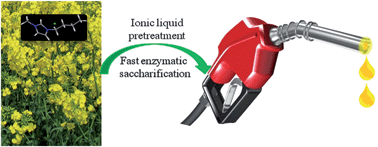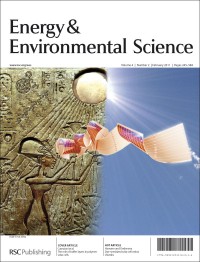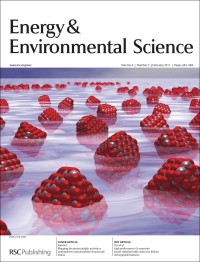New Energy and Environmental Science mini review
Advances on biomass pretreatment using ionic liquids: An overview
Haregewine Tadesse and Rafael Luque
Energy and Environmental Science, DOI: 10.1039/c0ee00667j
 With increasing pressure on non-renewable energy and chemical sources due to the Earth’s swelling population and dwindling supplies, research into renewable and environmentally friendly feedstocks is of critical importance. In this Energy and Environmental Science review, the authors Tadesse and Luque set out the current state of affairs in an area of research which sits at the interface of two important areas of science: ionic liquids and biofuels.
With increasing pressure on non-renewable energy and chemical sources due to the Earth’s swelling population and dwindling supplies, research into renewable and environmentally friendly feedstocks is of critical importance. In this Energy and Environmental Science review, the authors Tadesse and Luque set out the current state of affairs in an area of research which sits at the interface of two important areas of science: ionic liquids and biofuels.
The conversion of biomass into useful fuels and chemicals is a complex process. It is of utmost importance that a strategy for this conversion is developed which is low cost, efficient, and minimises the use of volatile organic solvents. A critical step in this process is the pre-treatment of the biomass. In this review the discussion revolves around lignocellulosic biomass, which includes materials like corn stalk and wheat straw. The pre-treatment step removes or weakens the strong linkages between cell wall components in the plant structure, making the biomass easier to break down and improving the eventual yield of useful products. The key point, as set out by the authors, is as follows:
The depolymerization or hydrolysis of lignocellulosics into intermediates that are more susceptible to chemical or biological transformations is a prerequisite step for the production of biofuels and chemicals.
The solvent systems that are currently used for pre-treatment present various difficulties and drawbacks, for example their volatility and the generation of poisonous gases. An exciting alternative to these systems has emerged in the form of ionic liquids, molten ion solutions which melt at temperatures less that 100 °C. These are considered as promising solvents in many areas of chemistry due to their high solvation capacity, negligible vapour pressure and highly tuneable properties.
To read more on this topic, including thorough explanation and detailed analysis of this exciting field of research, click here.














 With increasing pressure on non-renewable energy and chemical sources due to the Earth’s swelling population and dwindling supplies, research into renewable and environmentally friendly feedstocks is of critical importance. In this Energy and Environmental Science review, the authors Tadesse and Luque set out the current state of affairs in an area of research which sits at the interface of two important areas of science: ionic liquids and biofuels.
With increasing pressure on non-renewable energy and chemical sources due to the Earth’s swelling population and dwindling supplies, research into renewable and environmentally friendly feedstocks is of critical importance. In this Energy and Environmental Science review, the authors Tadesse and Luque set out the current state of affairs in an area of research which sits at the interface of two important areas of science: ionic liquids and biofuels. Lithium-sulfur batteries are promising rechargeable batteries because of their high energy storage capacity and low cost, but their use has been hindered by their short life cycle and loss of active sulfur through electrochemical reactions in the battery. Porous carbon materials can help as the sulfur is trapped in the pores, preventing it reacting further, but their preparation involves many synthetic steps.
Lithium-sulfur batteries are promising rechargeable batteries because of their high energy storage capacity and low cost, but their use has been hindered by their short life cycle and loss of active sulfur through electrochemical reactions in the battery. Porous carbon materials can help as the sulfur is trapped in the pores, preventing it reacting further, but their preparation involves many synthetic steps.